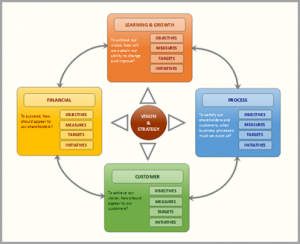For long-term investors looking for a hands-off investment strategy, DRIP investing can be a great option. Most financial advisers will tell you that if done right, DRIP investing is an accessible, low-cost way to take advantage of compounding and yield high gains with little upfront cost or effort.
Keep reading to learn about DRIP investing, its advantages and drawbacks, and some tips on getting started.
What is DRIP investing?
DRIP stands for dividend reinvestment plans or dividend reinvestment programs.
Essentially, you buy shares of stock from a company that offers DRIPs, then set up the account to automatically reinvest some or all of your dividends into more shares. These transactions can be set up on weekly, monthly, or quarterly schedules, and you choose how much you want to reinvest depending on the company’s options. This flexibility is one of the many perks of DRIP investing.
Because DRIP investing works by reinvesting dividends over time, it is a long-term strategy and shouldn’t be relied upon to make money quickly. As noted by Simply Safe Dividends, it’s not about “market timing but time in the market.”
For DRIP investing to work, you have to commit to the strategy for the long haul.
Advantages of DRIP Investing
DRIP investing is fairly easy.
DRIP investing is a way to automate your investing. You set up the frequency of your transactions and how much you want to reinvest, and from then on you’re on autopilot. Simply Safe Dividends emphasizes how DRIP investing can take your mind off the market and discourage impulsive investment decisions.
DRIP programs are also fairly easy to enroll in, whether you use a broker, DRIP agent, or buy directly from the company.
You don’t need a lot of money to start a DRIP account.
DRIP investing is a fairly low-cost investment strategy. You choose what stock shares you buy, which provides some flexibility in terms of your budget and risk tolerance.
Though you can use a broker to start a DRIP account (and some financial advisers recommend doing so), you don’t have to. This means you can skip the brokerage fee and simply buy directly from the company. That said, you can still get stuck with transaction fees even if you don’t hire a broker. Some people elect to use companies like Computershare, but this can also lead to hidden costs.
Compounding means you can make a lot off a little.
Financial advisers love DRIP investing as a long-term strategy because when done right, you can make a lot of money off a very little initial investment. That’s because of the magic of compounding. One statistic from Dividend.com shows that investing just $ 2,000 in 80 shares of Pepsi through a DRIP program in 1980 would have yielded 2,800 shares and $ 150,000 by 2004.
Drawbacks of DRIP Investing
All investment strategies have drawbacks, and DRIP investing is no different. One of the major drawbacks is that it’s not a good short-term strategy – for it to work, you have to commit to the strategy over a long period of time.
The experts over at The Balance also note that you won’t be able to borrow on margin against DRIP stocks, and you also can’t quickly sell your shares but instead have to go through an agent or fill out paperwork first.
Cost of DRIP Shares
As noted by Bankrate, DRIPs work by dollar-cost averaging, meaning that you buy shares at various prices throughout the year with more of them having lower share prices and only a few having high prices. That way, you pay a lower average price per share over time.
In general, DRIP investing is an inexpensive investment strategy. Many companies even offer DRIP shares at a discount, making them better deals than the same shares on the open market.
How to Choose DRIP Investments
It’s incredibly important to invest in the right companies for DRIP investing to work. You need to find a company that has a long track record of paying out good dividends to its investors. Experts recommend considering companies showing a record of at least 10+ years of dividend increases.
Because DRIP investing is so hands-off, you also want to avoid companies or stocks that will be volatile. Look for high-quality, low-risk stocks – this is not the strategy to use for a young company. Instead, look into established companies with predictable businesses.
If you’re just getting started on research, one way to get started is by using a stock screener to find optimal DRIP stocks.
Are DRIP investments taxable?
Yes, dividends are a form of income and thus taxable. However, Simply Safe Dividends notes that you can mitigate some of this cost by keeping these stocks in tax-deferred accounts such as IRAs or 401(k)s.
Who should consider DRIP investing?
Again, DRIP investing is best for long-term investors. It can be a great option if you don’t know much about investing or are looking for a hands-off, low-cost, high-yield investment strategy.
Business & Finance Articles on Business 2 Community(74)
Report Post




